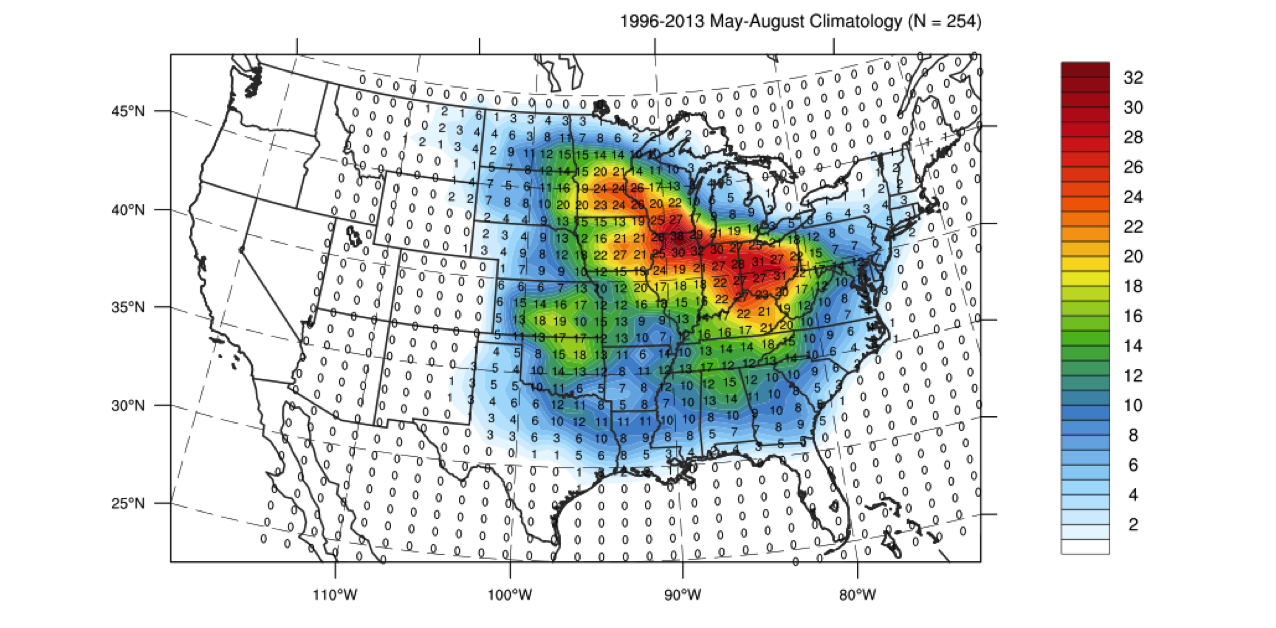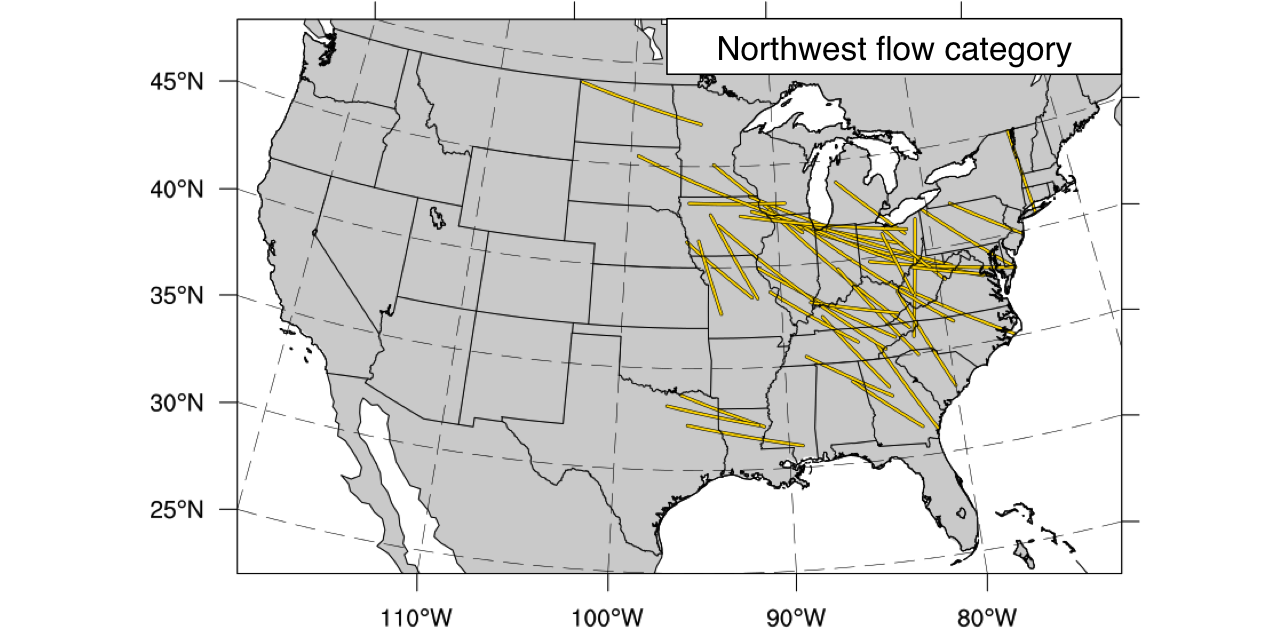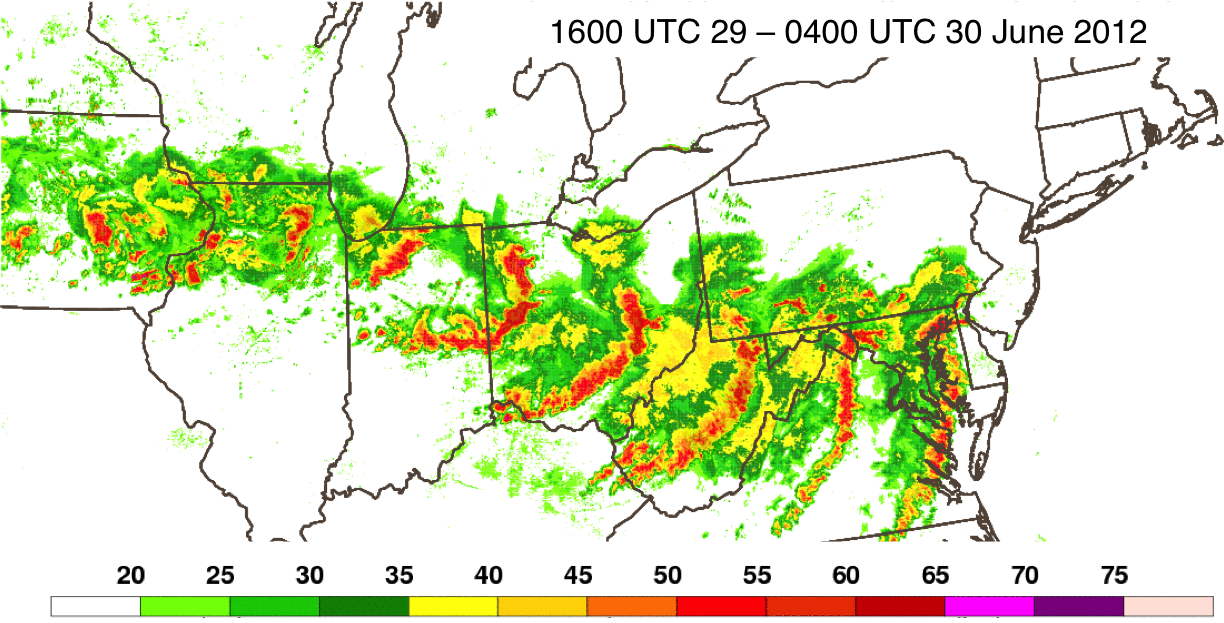Research
My research focused on derechos, more specifically
progressive derechos, which are severe mesoscale
convective systems (MCSs) that often form in benign
synoptic conditions and have a characteristic bowing
shape on radar (such as the radar image of the 29 – 30
June 2012 derecho located at the bottom of the page).
Because derechos are high-impact weather events causing
large swaths of wind damage, it is important to identify
the corridors of the United States most favorable for
their formation and to characterize the range of
synoptic environments in which they form.

Above is a warm season (May – August), 18-year (1996 –
2013) climatology of progressive derechos east of the
Rocky Mountains. The domain of interest was divided into
100 x 100 km grid boxes and Storm Prediction Center
severe wind reports associated with each of the 254
identified derechos were counted. The color fill
indicates how many derechos passed through a given grid
box over the 18-year span. A prominent corridor of
derecho activity exists from southeastern Minnesota to
the Appalachian mountains in West Virginia where long
stretches of instability and vertical wind shear
sufficient to maintain MCSs most often set up in the
warm season.

After we identified the derechos, Dr. Bosart and I
examined synoptic maps at various atmospheric levels
valid closest to each derecho initiation time in order
to subjectively group the events into distinct synoptic
categories. Above is a map of derecho tracks for one of
the seven categories we created. In a northwest flow
set-up, a northwest to southeast oriented upper-level
jet is collocated with an axis of high low-level
moisture and steep midlevel lapse rates, which produces
the instability and vertical wind shear necessary for
derecho formation and maintenance.

Above is a radar continuity map showing reflectivity
every 2 hours for the 29 – 30 June 2012 derecho. This
event is a member of the northwest flow category and was
responsible for knocking out 60 percent of the power in
West Virginia and causing over one billion dollars in
damage along its path from northern Illinois to the
Mid-Atlantic coast. Extreme instability both west and
east of the Appalachians allowed this event to cross the
mountains and become one of the strongest derechos on
record.